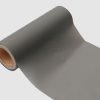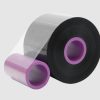
STOCK AND SHELVES LABELING
Location labelling
Before you start labelling your actual items, you need to label the location where each item will be stored. Storage needs to contain within it sections, rows and shelf numbers. If your storage area is very large it would be a good idea also to assign zone numbers or even room numbers if needed (which should be included in the final labelling).
* Don’t neglect empty storage spaces. Even if an area in your storage is not being utilised at present, you still need to label it for future use. This saves time and avoids the potential for inconsistency.
* Make labels easy to read. The colour of the text should be readable against the colour of the labels (bold black text usually works with any background colour). These colours should also not blend in with the colour of the shelving. A location label needs to be visible from afar, so try to use big text.
* No two location labels should be the same, so as to avoid confusion.
* Include arrows that point to the item or items that the label is referring to – especially useful when shelves are stacked on top of each other.
* Keep labelling consistent: if using numbers or letters (or both), keep using them throughout and in the same order.
* If you have shelves, start with the lowest denominator (“A” for letters and “1” for numbers) at the top and then descend.
Item labelling
Once you have your storage organised and each location or zone has a name or description, then you can move on to labelling all of your items.
* As with location labelling, make sure each item has a unique description.
* The name on a label should start with what the item is (a noun). For example, if all the labels for cups start with the word “cup”, then it will be easier to locate that specific group of items. However if, for argument’s sake, all item labels start with the colour of an item, then it will make searching and stocktaking difficult.
* Next, your label should describe the item with adjectives. Following on from the example above, the label on a box of cups can look like this: “cup, coffee, small, blue”. Use adjectives in order of importance, with the most important descriptive word at the start.
* When you label items, make sure you store them according to these labels. Once again using the same example, store all of the cups together and then divide that grouping into all of the coffee cups. Next, group together all of the coffee cups that are the “small” size and subdivide those according to their colour (in this case blue).
* To make things even easier, if boxes are plain or miscellaneous, print out images or photographs of the items inside to help you identify them without having to open the boxes.
* Only include information on the label that will help you in identifying and finding the items. Adding the manufacturer, vendor names, etc. isn’t necessary. These can be added to more detailed lists on your system.
* When it comes to adding size, dimensions or weight to the item description, try to use abbreviations that make sense to all involved, and use lower case letters.
The expertise Armor
- Low print cost
- Suitable for all label and character formats
- Perfect barcode legibility








